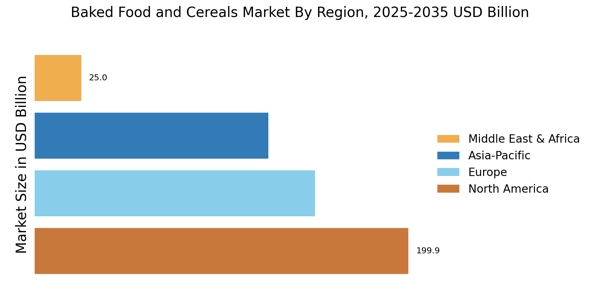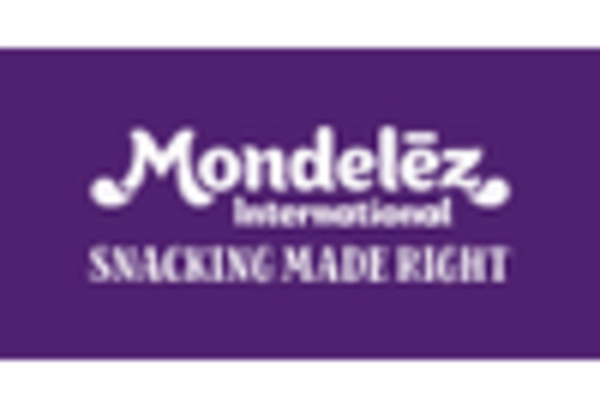E-Commerce Expansion
The rise of e-commerce is transforming the Baked Food and Cereals Market Industry, as more consumers turn to online shopping for their food needs. This shift is driven by the convenience of purchasing products from home and the ability to access a wider variety of options. Data shows that online sales of baked goods and cereals have increased by 25% in the past year, indicating a significant shift in consumer purchasing behavior. Retailers are adapting by enhancing their online presence and offering exclusive products through e-commerce platforms. This trend not only broadens market reach but also allows companies to gather valuable consumer insights, which can inform future product development and marketing strategies.
Health Consciousness
The increasing awareness of health and wellness among consumers appears to be a pivotal driver for the Baked Food and Cereals Market Industry. As individuals become more health-conscious, they tend to seek products that align with their dietary preferences, such as whole grains and low-sugar options. This trend is reflected in market data, which indicates that the demand for healthier baked goods has surged, with a notable increase in sales of whole grain products. In 2025, the market for whole grain cereals is projected to reach approximately 15 billion dollars, highlighting the shift towards nutritious alternatives. Consequently, manufacturers are reformulating their products to cater to this growing segment, thereby enhancing their market presence.
Sustainability Trends
Sustainability has emerged as a crucial driver for the Baked Food and Cereals Market Industry, as consumers increasingly prioritize environmentally friendly products. This trend is evident in the rising demand for organic and sustainably sourced ingredients, which are perceived as healthier and more ethical choices. Market data indicates that the organic baked goods segment is expected to grow at a compound annual growth rate of 8% over the next five years. Companies are responding by adopting sustainable practices, such as reducing packaging waste and sourcing local ingredients, which not only appeals to eco-conscious consumers but also enhances brand loyalty. This shift towards sustainability may reshape the competitive landscape of the industry.
Innovative Product Development
Innovation in product development is a significant driver for the Baked Food and Cereals Market Industry. Companies are increasingly investing in research and development to create unique offerings that appeal to diverse consumer preferences. This includes the introduction of novel flavors, textures, and functional ingredients that enhance the nutritional profile of baked goods and cereals. For instance, the incorporation of superfoods such as chia seeds and quinoa has gained traction, potentially attracting health-oriented consumers. Market analysis suggests that the introduction of innovative products could lead to a 10% increase in market share for companies that effectively leverage these trends, thereby fostering competition and growth within the industry.
Convenience and On-the-Go Options
The fast-paced lifestyle of modern consumers is driving the demand for convenience in the Baked Food and Cereals Market Industry. As individuals seek quick and easy meal solutions, products that offer portability and ease of preparation are gaining popularity. This trend is reflected in the increasing sales of ready-to-eat cereals and snack bars, which cater to busy lifestyles. Market Research Future indicates that the convenience food segment is projected to grow by 6% annually, suggesting a robust opportunity for manufacturers to innovate and expand their product lines. By focusing on convenience, companies can effectively tap into this lucrative market segment, potentially increasing their overall sales and market share.


















Leave a Comment